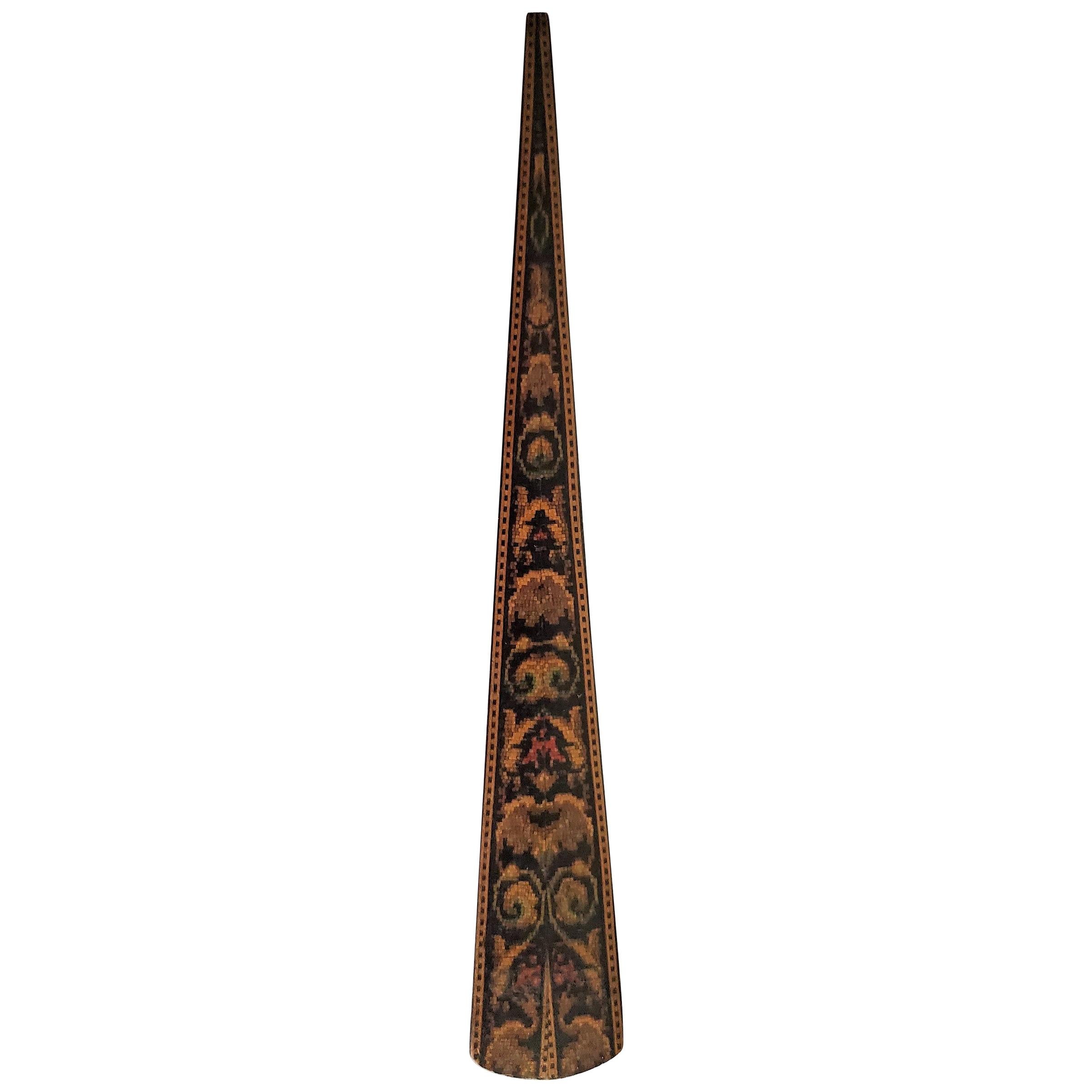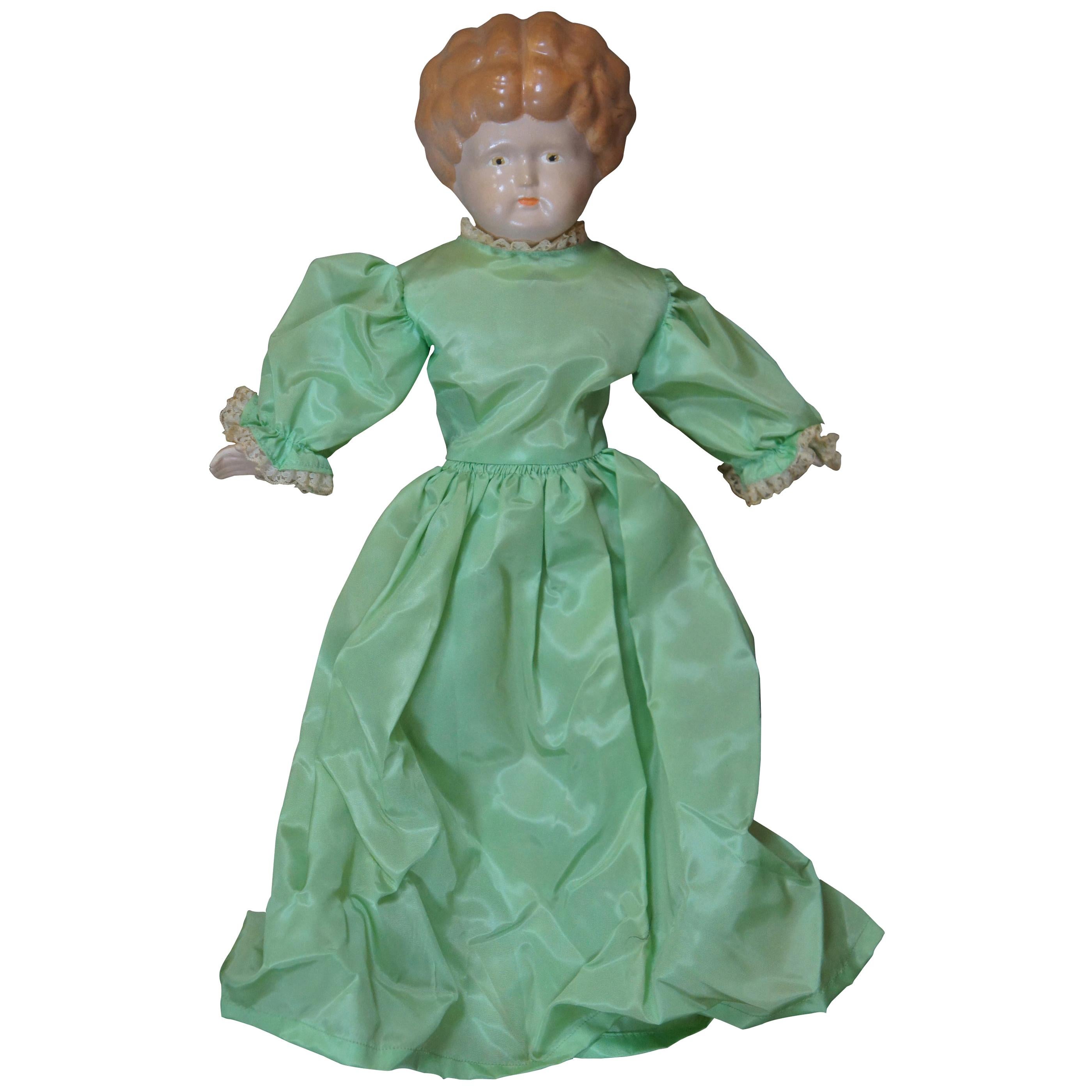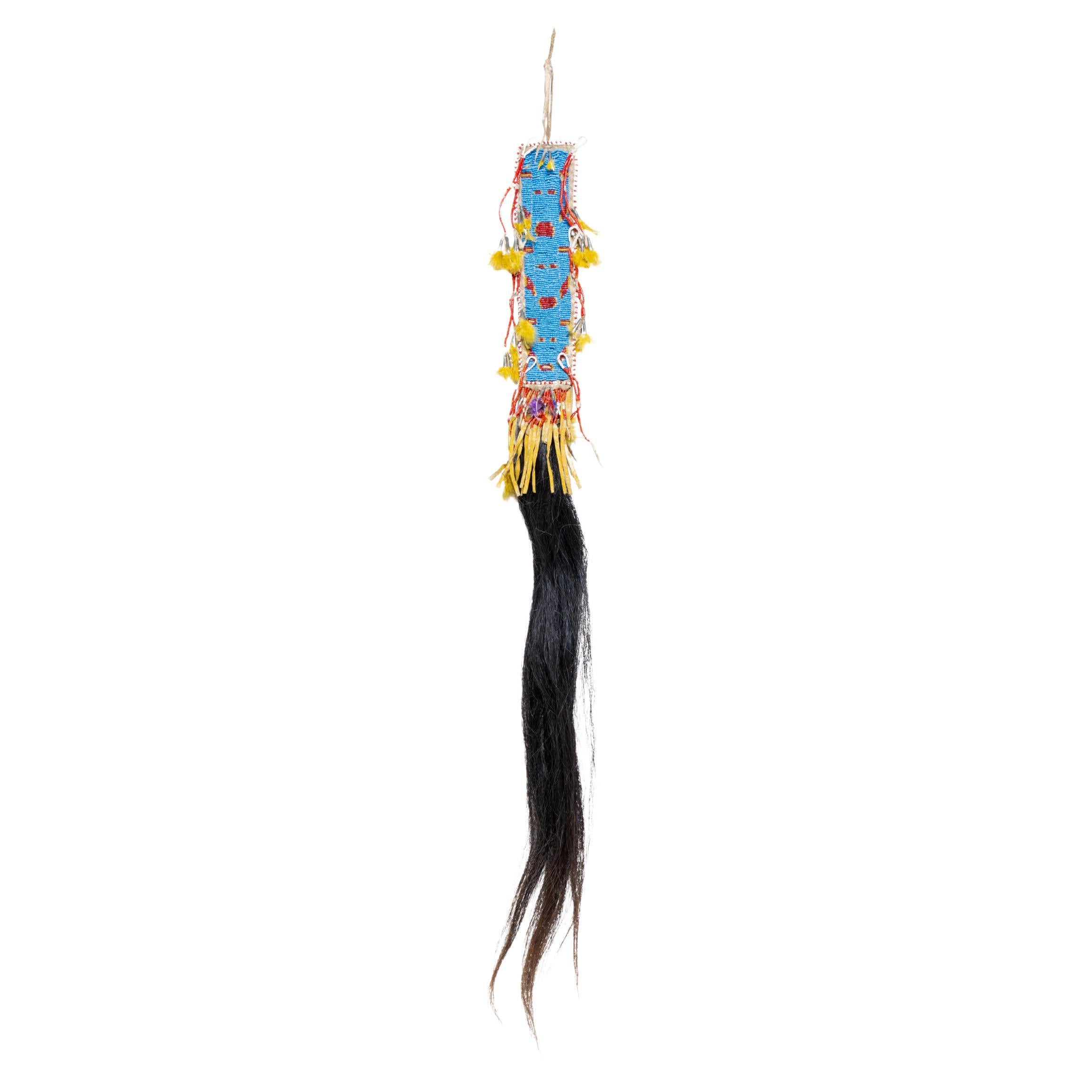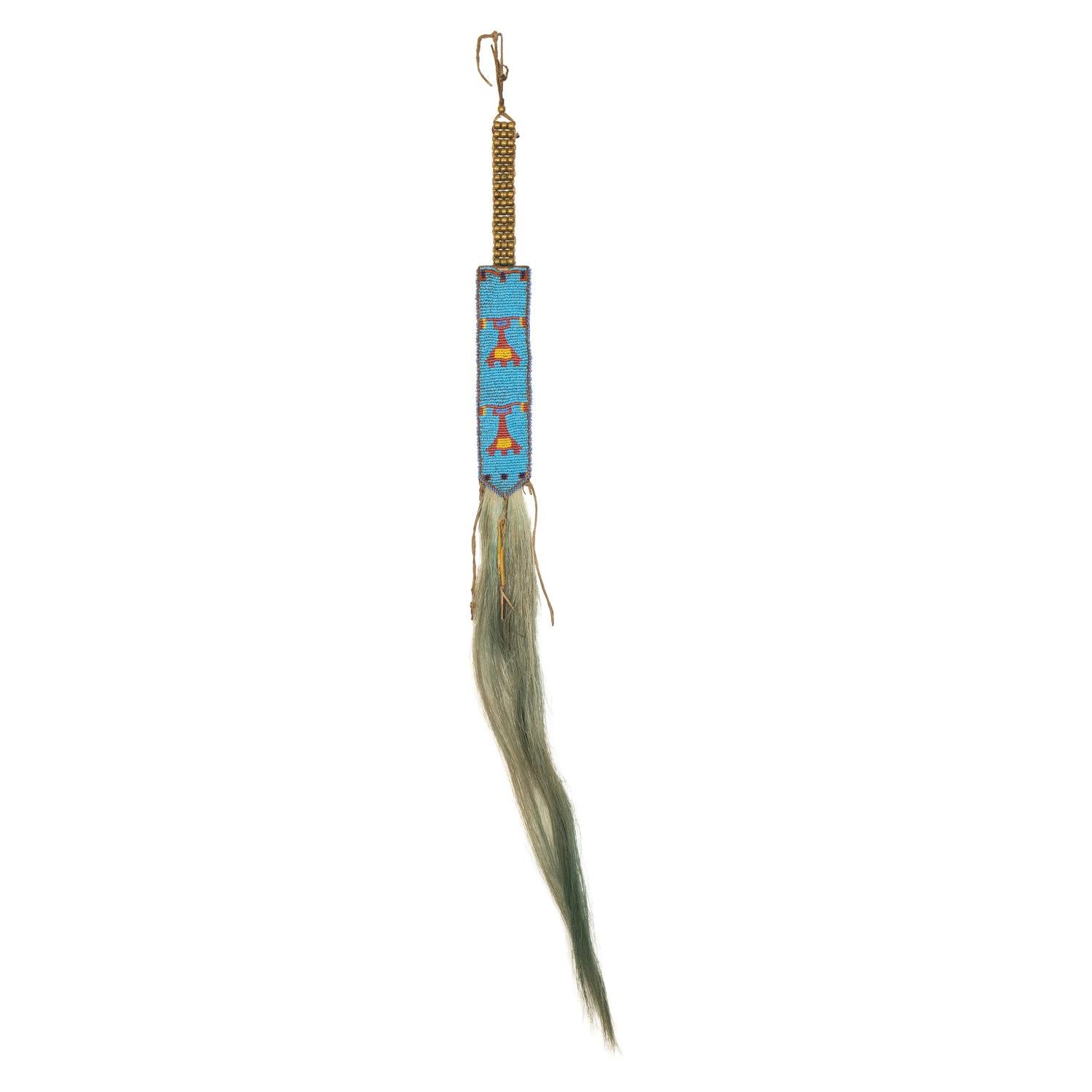Items Similar to 19th Century Tortoise Shell Decorative Hair Comb or Head Piece
Want more images or videos?
Request additional images or videos from the seller
1 of 10
19th Century Tortoise Shell Decorative Hair Comb or Head Piece
About the Item
A stunning and large antique 19th century tortoise shell, celluloid, or Bakelite hair comb or head piece with an intricate carved floral and open scroll work design. A wonderful decorative collectors piece with Art Nouveau overtones that is in very good condition with very light wear consistent with age.
12" x 6.5" x 2"
- Dimensions:Height: 2 in (5.08 cm)Width: 6.5 in (16.51 cm)Depth: 12 in (30.48 cm)
- Materials and Techniques:
- Period:
- Date of Manufacture:circa 1850
- Condition:Wear consistent with age and use.
- Seller Location:Brooklyn, NY
- Reference Number:1stDibs: LU1546236519552
About the Seller
4.9
Vetted Seller
These experienced sellers undergo a comprehensive evaluation by our team of in-house experts.
Established in 2015
1stDibs seller since 2015
574 sales on 1stDibs
Typical response time: 3 hours
- ShippingRetrieving quote...Ships From: Brooklyn, NY
- Return PolicyThis item cannot be returned.
More From This SellerView All
- 19th Century Leather and Gold Leaf Hand FanLocated in Brooklyn, NYA stunning and rare example of a 19th century hand fan, made of black leather and decorated with gold leaf. The fan has a brisé style, meaning th...Category
Antique Mid-19th Century Collectible Jewelry
MaterialsGold Leaf
- Antique 19th Century Baluch RugLocated in Brooklyn, NYA beautiful handwoven red, blue, tan, and off-white Baluch rug. Sometimes spelled as "Balouch" or "Baluchi", Baluch rugs are a type of handwoven tribal rug that originates from the ...Category
Antique Late 19th Century Persian Rugs
MaterialsWool
- Mid-Century Chess Set by Robert RosenwaldLocated in Brooklyn, NYRobert Rosenwald, son of art collector and philanthropist Lessing Rosenwald, studied at Cranbrook under the likes of Harry Bertoia, preceding a lifelong career sculpting and drawing....Category
Mid-20th Century American Mid-Century Modern Games
MaterialsPaper
- 19th Century Folding Sewing Table with Yardstick TopLocated in Brooklyn, NYA unique and charming piece of sewing history, this antique wood folding sewing or tailor’s table from the 1800s is perfect for enthusiasts who appreciate the nostalgia and functionality of vintage sewing furniture...Category
Antique Mid-19th Century Federal Side Tables
MaterialsWood
- 19th Century Giltwood Mirror with Rosette Corners and Fruit PanelLocated in Brooklyn, NYAn antique carved giltwood wall mirror from the 1800s featuring a rectangular frame with rosette corners and a basket of fruit panel at the top. It is made of wood and gilded with g...Category
Antique Early 19th Century Federal Wall Mirrors
MaterialsMirror
- Vintage Sinus Stackable Ashtray by Walter Zeischegg, 1966By Walter ZeischeggLocated in Brooklyn, NYDesigned by Walter Zeischegg and originally produced by Hellit of Germany in 1966, the iconic Sinus stackable ashtray came in an array of colors. A excellent Pop/Op Art artifact that can also be used as a coaster. The Sinus Ashtray...Category
Late 20th Century Tobacco Accessories
MaterialsPlastic
You May Also Like
- Rare 19th Century English Tunbridgeware Hair Pin or SlideLocated in Dallas, TXPresenting an absolutely gorgeous and extremely unique and rare 19th century British Tunbridgeware hair pin/bobbin or slide. This slide is unlike any of it’s kind we have seen before…. it is a very rare survivor ! From circa 1860–1880. Made of walnut with gorgeous marquetry inlay on the entirety of the front with classic Tunbridgeware micro-mosaic all over the front. The rear is walnut. The marquetry inlay appears to be various different woods, namely, maple, walnut and satinwood. Would have been worn in a Lady’s hair bun with the micro-mosaic facing forward. This would have belonged to a very elegant lady in the mid to late 19th century. Tunbridge ware is a form of decoratively inlaid woodwork, typically in the form of boxes, that is characteristic of Tonbridge and the spa town of Royal Tunbridge Wells in Kent in the 18th and 19th centuries. The decoration typically consists of a mosaic of many very small pieces of different coloured woods that form a pictorial vignette. Shaped rods and slivers of wood were first carefully glued together, then cut into many thin slices of identical pictorial veneer with a fine saw. Elaborately striped and feathered bandings for framing were pre-formed in a similar fashion. There is a collection of Tunbridge ware in the Tunbridge Wells Museum and Art Gallery in Tunbridge Wells. The famous makers of Tunbridge ware were in the Tunbridge Wells area of Kent; their most notable work was from circa 1830-1900. Early makers of Tunbridge ware, in Tunbridge Wells in the mid-18th century, were the Burrows family, and Fenner and Co. In the 19th century, around 1830, James Burrows invented a technique of creating mosaics from wooden tesserae. Henry Hollamby, apprenticed to the Burrows family, set up on his own in 1842 and became an important manufacturer of Tunbridge ware, employing about 40 people. Edmund Nye (1797–1863) and his father took over the Fenner company when William Fenner retired in 1840, after 30 years in partnership with him. Thomas Barton (1819–1903), previously apprenticed at the Wise factory, joined the Nyes in 1836, and worked as Nye’s designer; he took over the business in 1863 and continued there until his death. In Tonbridge (near to Tunbridge Wells), George Wise (1703–1779) is known to have had a business in 1746. It continued with his son Thomas, and Thomas’s nephew George (1779–1869), who took over in 1806. In its early years the company made articles such as workboxes and tea caddies with prints of popular views; later items had pictures created from mosaics. Their workshop in Tonbridge, Wise’s Tunbridge Ware Manufactory, was next to the Big Bridge over the Medway; the building was demolished in 1886 to widen the approach to the bridge. Tunbridge ware became popular with visitors to the spa town of Tunbridge Wells, who bought them as souvenirs and gifts. Articles included cribbage boards, paperweights, writing slopes, snuffboxes and glove boxes. At the Great Exhibition of 1851, Tunbridge ware by Edmund Nye, Robert Russell and Henry Hollamby was shown; Edmund Nye received a commendation from the judges for his work. He exhibited a table depicting a mosaic of a ship at sea; 110,800 tesserae were used in making the picture. The manufacturers of Tunbridge ware were cottage industries, and they were no more than nine in Tunbridge Wells and one in Tonbridge. The number declined in the 1880s; competent craftsmen were hard to find, and public tastes changed. After the death of Thomas Barton in 1903 the only surviving firm was Boyce, Brown and Kemp, which closed in 1927. Marquetry was an old technique which was continued by Nye and Barton to create images such as birds or butterflies. ‘Green Oak’ as caused by the fungus Chlorociboria aeruginascens. Stickware and half-square mosaic was invented by James Burrows in about 1830: a bunch of wooden sticks of different colours, each having triangular or diamond-shaped cross section, were tightly glued together; in the case of stickware, the resulting block was dried, then turned to form an article such as the base of a pincushion. For half-square mosaic, thin slices were taken from the composite block, and applied to a surface.[1][2][4] Tesselated mosaic, was a development by James Burrows of half-square mosaic; it was adopted by George Wise and Edmund Nye. Minute tesserae were used to form a wide variety of geometric and pictorial designs. Many sorts of wood were used for the various colours; about 40 were in regular use. Only natural colors were used; green was provided by “green oak”, produced by the action of fungus on fallen oak. Designs for articles were often taken from designs of Berlin wool work.Category
Antique Late 19th Century English High Victorian Collectible Jewelry
MaterialsSatinwood, Walnut
- 19th Century Santos HeadLocated in London, GB19th Century Santos Head We are proud to offer a rare example of a religious 19th Century hand carved Santos head. With polychrome paint still intact in...Category
Antique 1850s French Edwardian Religious Items
MaterialsPine
- Antique 19th Century Victorian German Porcelain China Head Doll Molded HairLocated in Dayton, OHAntique mid 19th century German china doll with painted porcelain bust, feet and hands, cloth body and green dress. Measures: 18”.Category
Antique Mid-19th Century Victorian Toys and Dolls
MaterialsPorcelain, Fabric, Paint
- 19th Century Northern Plains Hair DropBy Native American ArtLocated in Coeur d'Alene, IDNorthern Plains hair drop. Beaded blue with red accents. Quilled drops having tin cones and yellow feather fluffs with long black horsehair drop. Period: 19th century Origin: Great Plains - Northern Plains, Native American Size: 6" x 35" overall Family Owned & Operated Cisco’s Gallery deals in the rare, exceptional, and one-of-a-kind pieces that define the history of America and the Old West. Our pieces range from American Indian to Cowboy Western and include original items of everyday life, commerce, art, and warfare that tamed America’s frontier. Our 14,000 square foot gallery opened in 1996 in beautiful Coeur d’Alene, Idaho. Personal Service Cisco’s operates on old fashioned values – honesty and integrity, and all of our items are backed by our money back guarantee. We appreciate the opportunity to earn your business. Whether you desire assistance with a jewelry purchase, choosing a gift, identification, or even selling – we hope to be your trusted source. Native American, garments, Blackfeet, headdress, collectibles, antiques, Native American beadwork...Category
Antique Late 19th Century American Native American Native American Objects
MaterialsHide, Beads, Feathers
- 19th Century Sioux Quilled Hair DropBy Sioux Indian ArtLocated in Coeur d'Alene, IDSioux hair drop with brass trade beads, blue beaded background having red and yellow geometric designs. White horsehair drop dyed blue. Period: Last quarter of the 19th century Orig...Category
Antique Late 19th Century American Native American Native American Objects
MaterialsOther
- 19th Century Northern Plains Hair DropBy Native American ArtLocated in Coeur d'Alene, IDNorthern Plains hair drop with red beading with accents on hide, long quilled drops ending in tin cones with red feather fluffs, long black horsehair drop now doubled up on beading. Period: 19th century Origin: Great Plains - Northern Plains, Native American Size: 6" x 35" overall Family Owned & Operated Cisco’s Gallery deals in the rare, exceptional, and one-of-a-kind pieces that define the history of America and the Old West. Our pieces range from American Indian to Cowboy Western and include original items of everyday life, commerce, art, and warfare that tamed America’s frontier. Our 14,000 square foot gallery opened in 1996 in beautiful Coeur d’Alene, Idaho. Personal Service Cisco’s operates on old fashioned values – honesty and integrity, and all of our items are backed by our money back guarantee. We appreciate the opportunity to earn your business. Whether you desire assistance with a jewelry purchase, choosing a gift, identification, or even selling – we hope to be your trusted source. Native American, garments, Blackfeet, headdress, collectibles, antiques, Native American beadwork...Category
Antique Late 19th Century American Native American Native American Objects
MaterialsHide, Beads, Feathers





